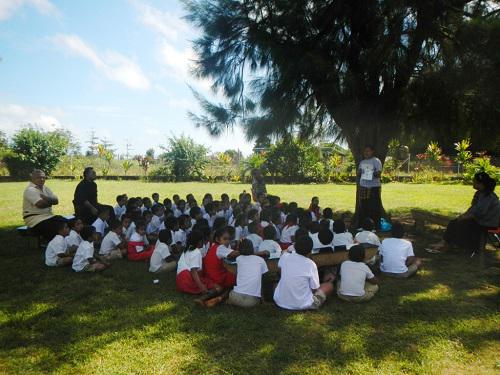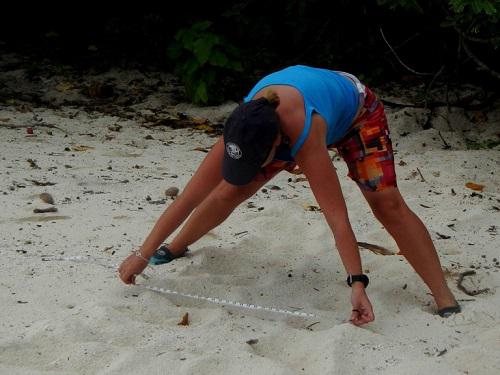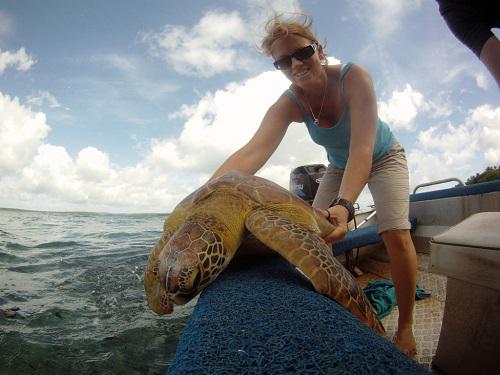The aim of the project is to establish a community based turtle conservation project and education/outreach program in Vava’u to increase to nesting population on Vava’u and to discourage illegal turtle fishing activities.

Visiting schools.
Four species of marine turtle have been reported to occur in Tongan waters: hawksbill turtle (Eretmachelys imbricate), green turtle (Chelonia mydas), loggerhead turtle (Caretta caretta) and the leatherback turtle (Dermochelys cariacea) with two of these species known to nest on the beaches (hawksbill and green turtle). While both species are known to nest on the beaches of Tonga, it is reported that the majority of nests are laid by the hawksbill turtle.

Fonuaoneone Track 9.
There is legislation in place to protect turtles under Tongan law with an authorised harvesting season limited to male turtles (excluding leatherbacks) only during the months of March through July. The closed season is all year for females of all species, males of the leatherback species and from August to February for all other male turtle species. In addition to this, all nests and their eggs are fully protected by law.

Turtle Release.
In Tonga there exists a demand for turtle meat as it is considered a delicacy and harvesting is common during the open season. Live exports of turtle between island groups have been recorded, with most of these animals being sent for private and commercial sale/consumption. There is a reported problem in the country of Tonga with illegal harvesting of males within the closed season, of females and of egg poaching. While these reports have been made, there is no official quantification of the scale of this occurrence and urgent data is needed to fully understand the scale of the illegal harvesting.
In specific regard to Vava’u, four main problems have been locally identified as the basis for establishing this conservation project. These are:
1. Illegal harvesting of nests and turtles during closed season
2. Lack of enforcement of legislation during the closed and open seasons on size limits, sex, etc
3. Lack of care by communities to protected nesting and foraging grounds
4. Placement of static nets for fishing leading to turtle by-catch
The mission of this project is to address these four key issues utilizing a variety of objectives and associated action plans. To achieve these long term goals, the project will be broken down into a series of shorter term goals which will form the basis for a multi-year strategic action plan.